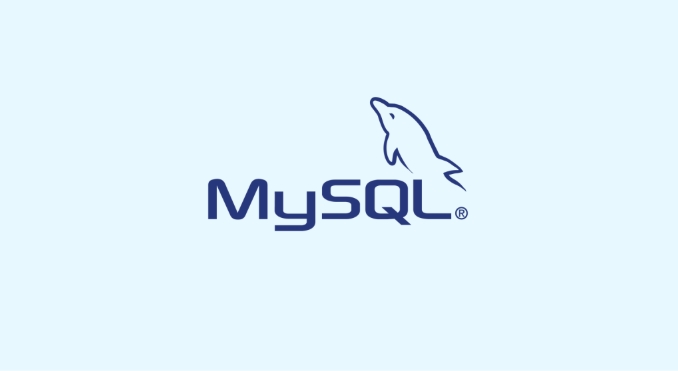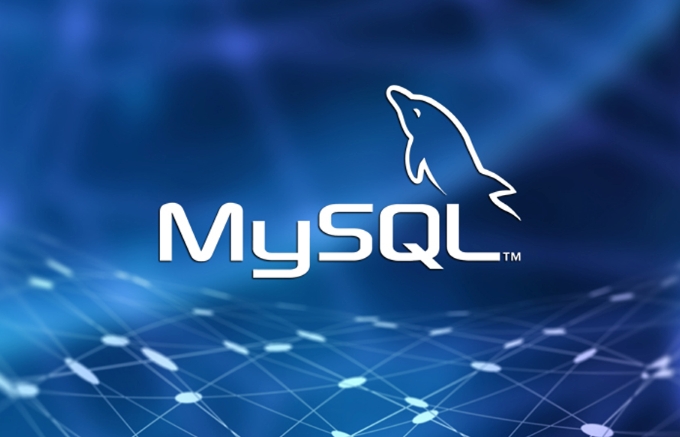Performing database schema migrations in MySQL
Jul 06, 2025 am 02:51 AMDatabase schema migration refers to the process of modifying the database structure without changing the data, which mainly includes adding or deleting tables, modifying column types or constraints, creating or deleting indexes, changing default values ??or nullable settings, etc. It is usually driven by application updates, for example, when new features need to store user preferences, new columns are added to the user table. Unlike data migrations that deal with large amounts of data movement, pattern migration focuses on structural changes. To safely perform mode migration, version control should be used to track structure files, verify in the test environment before the production environment, split the large migration into small steps, avoid multiple irrelevant changes in a single time, and note that changes to large tables may cause long-term table locking problems. You can use tools such as pt-online-schema-change or gh-ost to reduce downtime. Common pitfalls include ignoring local and production environment differences, not synchronizing documents or ORM mappings, ignoring backward compatibility. It is recommended to perform addition operations first and then subtraction operations, and always establish a rollback plan to prevent data loss.

When you need to change the structure of your MySQL database—like adding a new column, modifying a table, or changing indexes—you're doing what's called a schema migration. It might sound technical, but it's a common task, especially as applications evolve over time. The key is to do it safely and with minimal disruption.

What Schema Migrations Typically Involve
At their core, schema migrations are about applying changes to your database structure in a controlled way. This usually includes things like:

- Adding or removing tables
- Changing column types or constraints
- Creating or dropping indexes
- Modifying default values ??or nullable settings
These changes are often driven by updates in your application code. For example, if you're launching a new feature that needs to store user preferences, you might add a preferences column to your users table.
It's important to note that unlike data migrations (which deal with moving or transforming large sets of data), schema migrations focus purely on structure.

How to Apply Changes Safely
MySQL supports most basic schema changes via ALTER TABLE , CREATE TABLE , and similar commands. But not all changes are created equal—some can lock your tables for long periods or cause performance issues if done carelessly.
Here are some general best practices:
- Use version control for your schema files so you can track and roll back changes.
- Always test migrations in a staging environment before running them in production.
- If possible, break large migrations into smaller steps.
- Avoid making multiple unrelated changes in one migration—it makes debugging harder if something goes wrong.
One thing to watch out for: changing a large table can take time and may block reads/writes during the process. In high-traffic systems, consider using tools like pt-online-schema-change or gh-ost to minimize downtime.
Common Gotchas and How to Avoid Them
Schema migrations usually go smoothly, but there are a few traps people fall into:
- Assuming local and production environments match : If your dev DB has 10 rows and your prod has 10 million, an
ALTER TABLEcan behave very differently. - Forgetting to update documentation or ORM mappings : Your app might break if it expects a field that no longer exists.
- Not handling backward compatibility : Especially when removing or renaming columns, make sure old code can still work until it's fully phased out.
A good trick is to separate destructive changes (like dropping a column) from additional ones (like adding a column). Do the additions first, deploy the corresponding code, then later remove what you don't need.
Also, always have a rollback plan. If something goes wrong, can you revert the migration without losing data?
That's the gist of it. Schema migrations are straightforward most of the time, but they require a bit of planning, especially in live systems. Keep it simple, test thoroughly, and don't rush when making structural changes to your data.
The above is the detailed content of Performing database schema migrations in MySQL. For more information, please follow other related articles on the PHP Chinese website!

Hot AI Tools

Undress AI Tool
Undress images for free

Undresser.AI Undress
AI-powered app for creating realistic nude photos

AI Clothes Remover
Online AI tool for removing clothes from photos.

Clothoff.io
AI clothes remover

Video Face Swap
Swap faces in any video effortlessly with our completely free AI face swap tool!

Hot Article

Hot Tools

Notepad++7.3.1
Easy-to-use and free code editor

SublimeText3 Chinese version
Chinese version, very easy to use

Zend Studio 13.0.1
Powerful PHP integrated development environment

Dreamweaver CS6
Visual web development tools

SublimeText3 Mac version
God-level code editing software (SublimeText3)

Hot Topics
 Resetting the root password for MySQL server
Jul 03, 2025 am 02:32 AM
Resetting the root password for MySQL server
Jul 03, 2025 am 02:32 AM
To reset the root password of MySQL, please follow the following steps: 1. Stop the MySQL server, use sudosystemctlstopmysql or sudosystemctlstopmysqld; 2. Start MySQL in --skip-grant-tables mode, execute sudomysqld-skip-grant-tables&; 3. Log in to MySQL and execute the corresponding SQL command to modify the password according to the version, such as FLUSHPRIVILEGES;ALTERUSER'root'@'localhost'IDENTIFIEDBY'your_new
 Establishing secure remote connections to a MySQL server
Jul 04, 2025 am 01:44 AM
Establishing secure remote connections to a MySQL server
Jul 04, 2025 am 01:44 AM
TosecurelyconnecttoaremoteMySQLserver,useSSHtunneling,configureMySQLforremoteaccess,setfirewallrules,andconsiderSSLencryption.First,establishanSSHtunnelwithssh-L3307:localhost:3306user@remote-server-Nandconnectviamysql-h127.0.0.1-P3307.Second,editMyS
 Performing logical backups using mysqldump in MySQL
Jul 06, 2025 am 02:55 AM
Performing logical backups using mysqldump in MySQL
Jul 06, 2025 am 02:55 AM
mysqldump is a common tool for performing logical backups of MySQL databases. It generates SQL files containing CREATE and INSERT statements to rebuild the database. 1. It does not back up the original file, but converts the database structure and content into portable SQL commands; 2. It is suitable for small databases or selective recovery, and is not suitable for fast recovery of TB-level data; 3. Common options include --single-transaction, --databases, --all-databases, --routines, etc.; 4. Use mysql command to import during recovery, and can turn off foreign key checks to improve speed; 5. It is recommended to test backup regularly, use compression, and automatic adjustment.
 Handling NULL Values in MySQL Columns and Queries
Jul 05, 2025 am 02:46 AM
Handling NULL Values in MySQL Columns and Queries
Jul 05, 2025 am 02:46 AM
When handling NULL values ??in MySQL, please note: 1. When designing the table, the key fields are set to NOTNULL, and optional fields are allowed NULL; 2. ISNULL or ISNOTNULL must be used with = or !=; 3. IFNULL or COALESCE functions can be used to replace the display default values; 4. Be cautious when using NULL values ??directly when inserting or updating, and pay attention to the data source and ORM framework processing methods. NULL represents an unknown value and does not equal any value, including itself. Therefore, be careful when querying, counting, and connecting tables to avoid missing data or logical errors. Rational use of functions and constraints can effectively reduce interference caused by NULL.
 Analyzing the MySQL Slow Query Log to Find Performance Bottlenecks
Jul 04, 2025 am 02:46 AM
Analyzing the MySQL Slow Query Log to Find Performance Bottlenecks
Jul 04, 2025 am 02:46 AM
Turn on MySQL slow query logs and analyze locationable performance issues. 1. Edit the configuration file or dynamically set slow_query_log and long_query_time; 2. The log contains key fields such as Query_time, Lock_time, Rows_examined to assist in judging efficiency bottlenecks; 3. Use mysqldumpslow or pt-query-digest tools to efficiently analyze logs; 4. Optimization suggestions include adding indexes, avoiding SELECT*, splitting complex queries, etc. For example, adding an index to user_id can significantly reduce the number of scanned rows and improve query efficiency.
 Aggregating data with GROUP BY and HAVING clauses in MySQL
Jul 05, 2025 am 02:42 AM
Aggregating data with GROUP BY and HAVING clauses in MySQL
Jul 05, 2025 am 02:42 AM
GROUPBY is used to group data by field and perform aggregation operations, and HAVING is used to filter the results after grouping. For example, using GROUPBYcustomer_id can calculate the total consumption amount of each customer; using HAVING can filter out customers with a total consumption of more than 1,000. The non-aggregated fields after SELECT must appear in GROUPBY, and HAVING can be conditionally filtered using an alias or original expressions. Common techniques include counting the number of each group, grouping multiple fields, and filtering with multiple conditions.
 Managing Transactions and Locking Behavior in MySQL
Jul 04, 2025 am 02:24 AM
Managing Transactions and Locking Behavior in MySQL
Jul 04, 2025 am 02:24 AM
MySQL transactions and lock mechanisms are key to concurrent control and performance tuning. 1. When using transactions, be sure to explicitly turn on and keep the transactions short to avoid resource occupation and undolog bloating due to long transactions; 2. Locking operations include shared locks and exclusive locks, SELECT...FORUPDATE plus X locks, SELECT...LOCKINSHAREMODE plus S locks, write operations automatically locks, and indexes should be used to reduce the lock granularity; 3. The isolation level is repetitively readable by default, suitable for most scenarios, and modifications should be cautious; 4. Deadlock inspection can analyze the details of the latest deadlock through the SHOWENGINEINNODBSTATUS command, and the optimization methods include unified execution order, increase indexes, and introduce queue systems.
 Paginating Results with LIMIT and OFFSET in MySQL
Jul 05, 2025 am 02:41 AM
Paginating Results with LIMIT and OFFSET in MySQL
Jul 05, 2025 am 02:41 AM
MySQL paging is commonly implemented using LIMIT and OFFSET, but its performance is poor under large data volume. 1. LIMIT controls the number of each page, OFFSET controls the starting position, and the syntax is LIMITNOFFSETM; 2. Performance problems are caused by excessive records and discarding OFFSET scans, resulting in low efficiency; 3. Optimization suggestions include using cursor paging, index acceleration, and lazy loading; 4. Cursor paging locates the starting point of the next page through the unique value of the last record of the previous page, avoiding OFFSET, which is suitable for "next page" operation, and is not suitable for random jumps.






